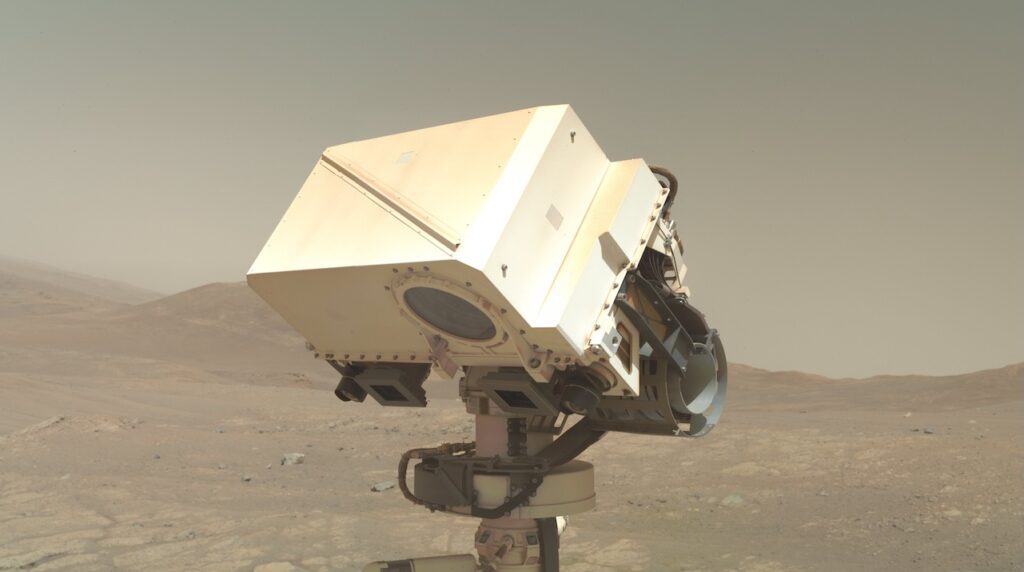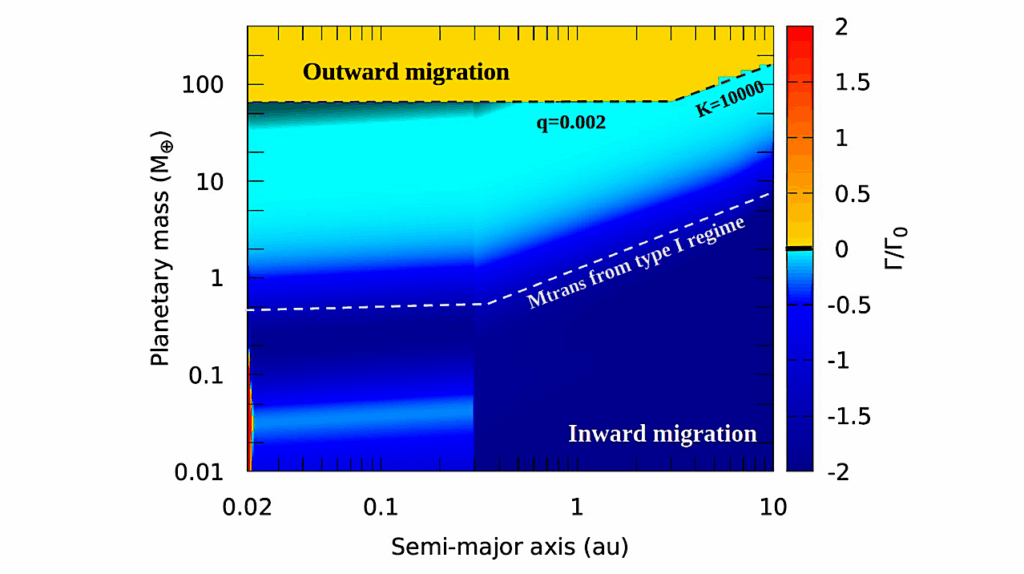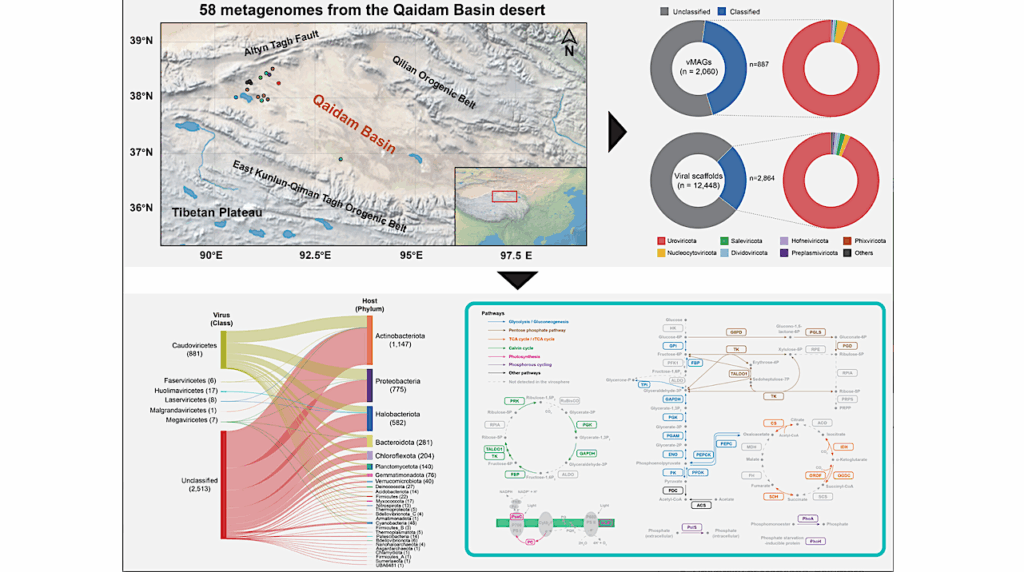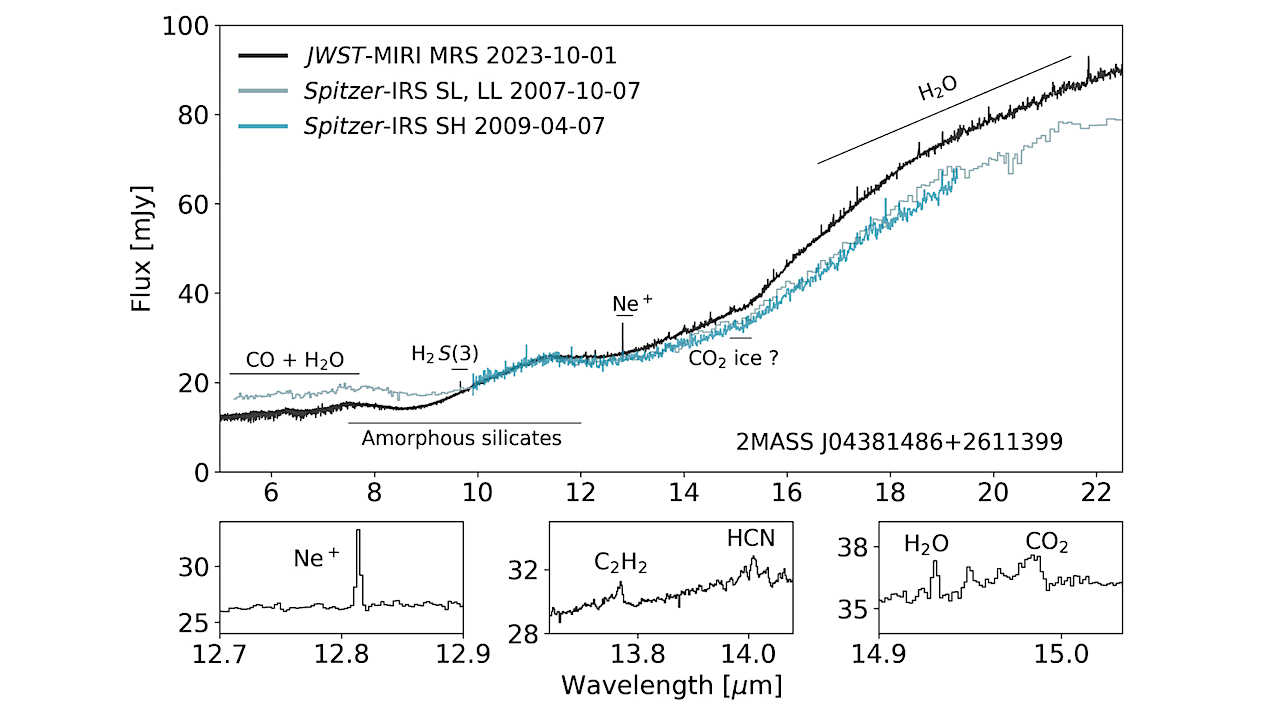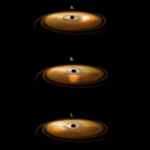Now Reading: MINDS: The Very Low-mass Star And Brown Dwarf Sample — Hidden Water In Carbon-dominated Protoplanetary Disks
-
01
MINDS: The Very Low-mass Star And Brown Dwarf Sample — Hidden Water In Carbon-dominated Protoplanetary Disks
MINDS: The Very Low-mass Star And Brown Dwarf Sample — Hidden Water In Carbon-dominated Protoplanetary Disks


Detections and non-detections of pure rotational line emission of water. The continuum subtracted spectra are shown in black and the water slab models in blue. The slab model parameters are arbitrarily chosen for a visual match with the observed spectra. The temperature and column densities of the models are the same across all the panels, while the emitting area is scaled to match the flux level. The vertical gray area in each panel shows the wavelength region used to calculate the noise level. The light gray shaded region across the spectra shows the ±3σ noise level obtained in this way. The identified water line transitions are indicated at the top of the figure as JKa Kc − J ′ K ′ a K ′ c , where J, Ka, Kc are the total angular momentum quantum number, and the projections of the angular momentum on the principal axes. — astro-ph.EP
Infrared observations of the inner disks around very low-mass stars (VLMS, <0.3M⊙) have revealed a carbon-rich gas composition in the terrestrial planet-forming regions. Contrary to the typically water-rich T Tauri disk spectra, only two disks around VLMS have been observed to be water-rich among more than ten VLMS disks observed so far with JWST/MIRI.
In this letter, we systematically search for the presence of water and other oxygen-bearing molecules in the JWST/MIRI spectra of ten VLMS disks from the MIRI mid-INfrared Disk Survey (MINDS).
In addition to the two previously reported detections of water emission in this VLMS sample, we detect water emission in the spectra of three other sources and tentatively in one source, and we provide strong evidence for water emission in the remaining disks in the MINDS sample, most of which have bright emission from carbon-bearing molecules. We show that the C2H2 emission is much stronger than that of water for sources with low luminosities, and the hydrocarbons outshine the water emission in such conditions.
We propose that the appearance of water-rich vs. hydrocarbon-rich spectra is related to the location of the water reservoir in the disk relative to the main hydrocarbon reservoir.
Our findings indicate that the terrestrial planet forming regions in VLMS disks have high carbon-to-oxygen ratios (C/O>1), but can still harbor ample water similar to those in the T Tauri disks.
Aditya M. Arabhavi (1), Inga Kamp (1), Ewine F. van Dishoeck (2 and 3), Thomas Henning (4), Hyerin Jang (5), Valentin Christiaens (6 and 7), Danny Gasman (6), Ilaria Pascucci (8), Giulia Perotti (4), Sierra L. Grant (9), David Barrado (10), Manuel Güdel (11 and 12), Pierre-Olivier Lagage (13), Alessio Caratti o Garatti (14 and 15), Fred Lahuis (16), L. B. F. M. Waters (5 and 17), Till Kaeufer (18 and 1 and 17 and 19 and 20), Jayatee Kanwar (1 and 18 and 21), Maria Morales-Calderón (10), Kamber Schwarz (4), Andrew D. Sellek (2), Benoît Tabone (22), Milou Temmink (2), Marissa Vlasblom (2) ((1) Kapteyn Astronomical Institute, Rijksuniversiteit Groningen, Groningen, The Netherlands, (2) Leiden Observatory, Leiden University, Leiden, the Netherlands, (3) Max-Planck Institut für Extraterrestrische Physik (MPE), Garching, Germany, (4) Max-Planck-Institut für Astronomie (MPIA), Heidelberg, Germany, (5) Department of Astrophysics/IMAPP, Radboud University, Nijmegen, The Netherlands, (6) Institute of Astronomy, KU Leuven, Leuven, Belgium, (7) STAR Institute, Université de Liége, Liége, Belgium, (8) Department of Planetary Sciences, University of Arizona, Tucson, USA, (9) Earth and Planets Laboratory, Carnegie Institution for Science, Washington, USA, (10) Centro de Astrobiología (CAB), CSIC-INTA, ESAC Campus, Madrid, Spain, (11) Dept. of Astrophysics, University of Vienna, Vienna, Austria, (12) ETH Zürich, Institute for Particle Physics and Astrophysics, Zürich, Switzerland, (13) Université Paris-Saclay, Université Paris Cité, CEA, CNRS, AIM, Gif-sur-Yvette, France, (14) INAF – Osservatorio Astronomico di Capodimonte, Napoli, Italy, (15) Dublin Institute for Advanced Studies, Dublin, Ireland, (16) SRON Netherlands Institute for Space Research, Groningen, The Netherlands, (17) SRON Netherlands Institute for Space Research, Leiden, the Netherlands, (18) Space Research Institute, Austrian Academy of Sciences, Graz, Austria, (19) Institute for Theoretical Physics and Computational Physics, Graz University of Technology, Graz, Austria, (20) Department of Physics and Astronomy, University of Exeter, Exeter, UK, (21) TU Graz, Fakultät für Mathematik, Physik und Geodäsie, Graz, Austria, (22) Université Paris-Saclay, CNRS, Institut d’Astrophysique Spatiale, Orsay, France)
Comments: Accepted for publication in Astrophysical Journal Letters, 21 pages, 24 figures
Subjects: Earth and Planetary Astrophysics (astro-ph.EP); Solar and Stellar Astrophysics (astro-ph.SR)
Cite as: arXiv:2504.11425 [astro-ph.EP] (or arXiv:2504.11425v1 [astro-ph.EP] for this version)
https://doi.org/10.48550/arXiv.2504.11425
Focus to learn more
Submission history
From: Aditya Mahadeva Arabhavi
[v1] Tue, 15 Apr 2025 17:38:14 UTC (8,573 KB)
https://arxiv.org/abs/2504.11425
Astrobiology,
Stay Informed With the Latest & Most Important News
Previous Post
Next Post
-
 012024 in Review: Highlights from NASA in Silicon Valley
012024 in Review: Highlights from NASA in Silicon Valley -
 02Panasonic Leica Summilux DG 15mm f/1.7 ASPH review
02Panasonic Leica Summilux DG 15mm f/1.7 ASPH review -
 03From Polymerization-Enabled Folding and Assembly to Chemical Evolution: Key Processes for Emergence of Functional Polymers in the Origin of Life
03From Polymerization-Enabled Folding and Assembly to Chemical Evolution: Key Processes for Emergence of Functional Polymers in the Origin of Life -
 04How New NASA, India Earth Satellite NISAR Will See Earth
04How New NASA, India Earth Satellite NISAR Will See Earth -
 05And Thus Begins A New Year For Life On Earth
05And Thus Begins A New Year For Life On Earth -
 06Astronomy Activation Ambassadors: A New Era
06Astronomy Activation Ambassadors: A New Era -
07SpaceX launch surge helps set new global launch record in 2024












